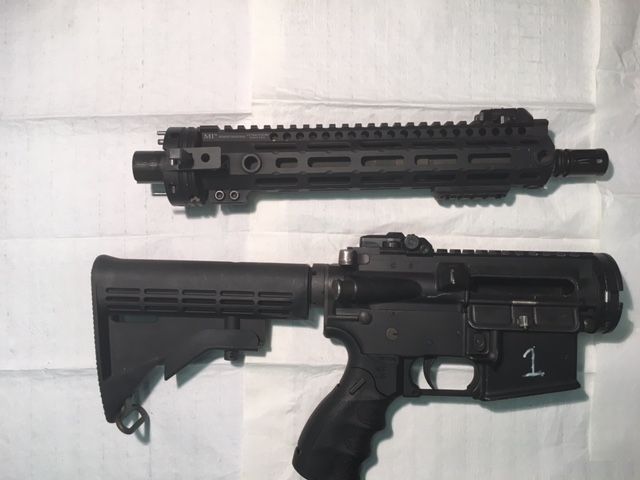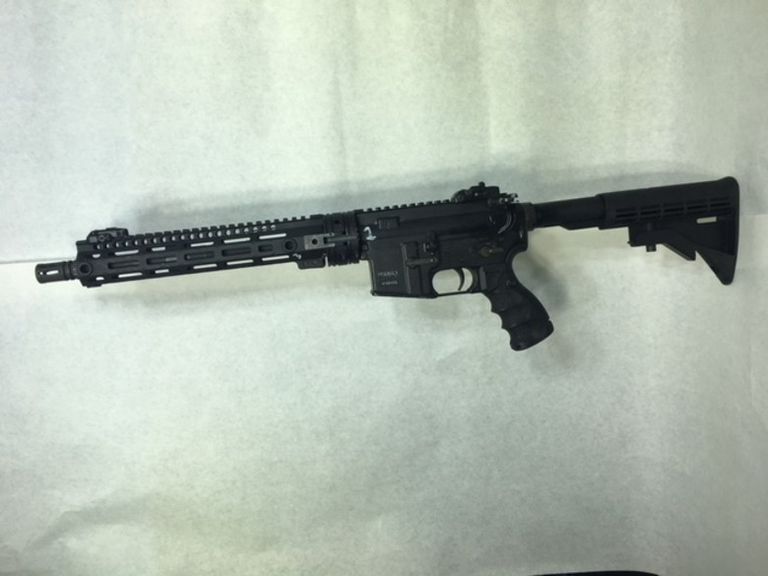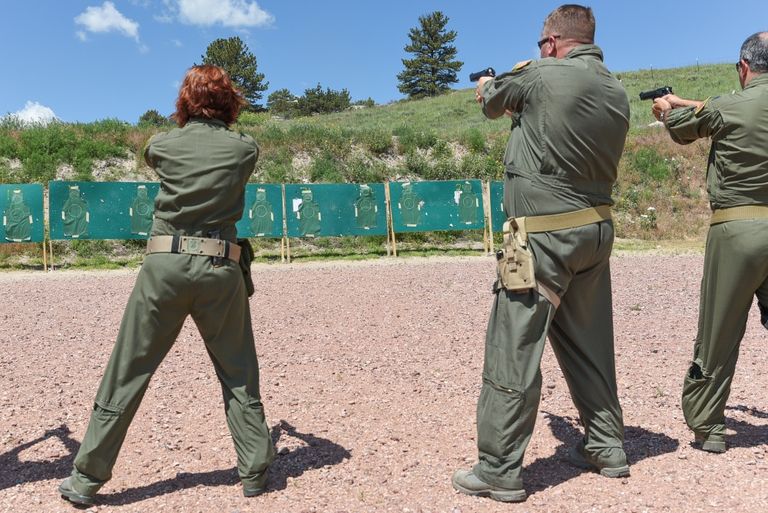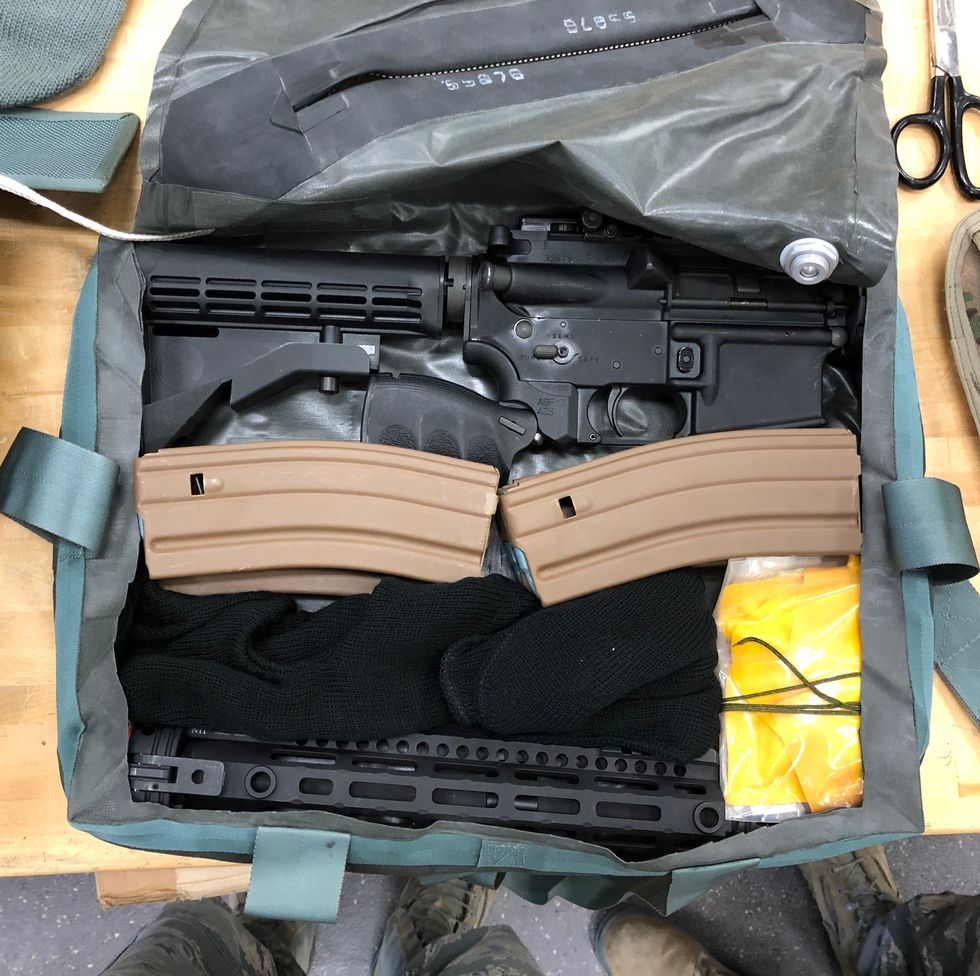La US Air Force ha desarrollado una versión de fusil de asalto de pequeño tamaño que cabe en el asiento eyectable de los pilotos de modernos jets de combate. Denominada GAU-5A, es una versión del fusil M4, desmontable en dos piezas, de fácil ensamble en situaciones de emergencia, y que provee a los pilotos de aviones siniestrados, de un importante poder de fuego ante una situación de emergencia.
The U.S. Air Force developed a new assault rifle that breaks down into two pieces, allowing it to be stored in the ejection seat of modern jets. The GAU-5A carbine is designed to provide the firepower necessary for aircrew to defend themselves until rescue.
The GAU-5A was designed by the Air Force Gunsmith Shop, which, according to Military.com, was formed in 1958 to repair and refurbish all small arms for the Air Force, from pistols to .50-caliber machine guns. The Air Force maintains a large arsenal of firearms carried by security forces, mounted on vehicles, and packed away for aircrews.

The GAU-5A broken down into two pieces.
Air Force.
The Gunsmith Shop received a requirement for the weapon with the ability to hit a “man-sized target at 200 meters,” according to Guns.com. That’s considerably farther than the effective range of the new M17 pistol. While M-4 carbines are plentiful in Air Force service, they’re also much larger, with an average length of approximately 33 inches and a weight of seven pounds.
The GAU-5A is a modified M-4 carbine, the same weapon used by U.S. Army and Marine Corps personnel, as well as Air Force security personnel. The gun is modified into a “takedown” weapon, breaking down into two major pieces for storage purposes. The gun and four 30-round magazines loaded with 5.56-millimeter ammunition are designed to fit in a 16 x 14 x 3.5-inch compartment in an ACES II ejection seat.

The GAU-5A fully extended, minus magazine.
U.S. Air Force.
A normal M4 carbine can break down into two major pieces, the lower receiver and upper receiver, but the resulting pieces still won’t fit into the ejection seat compartment. The Gunsmith Shop makes several modifications to an existing M4 to create a GAU-5A. First, it replaces the standard 14.5-inch barrel with a 12.5-inch barrel to create an overall shorter length. Next, it installed a Cry Havoc Tactical Quick Release Barrel (QRB) kit, which allows the barrel and handguard to be removed. The pistol grip also folds backward. Finally the bulky front sight post is removed and replaced with front and rear fold-down sights.
If a pilot bails out over hostile territory, he or she simply removes the weapon case from the back of the ejection seat, folds the pistol grip forward, fits the barrel on the rifle, pops up the sights, and inserts a loaded magazine. The entire process takes 30 seconds.
The U.S. Air Force has issued so-called “bailout” weapons for decades for use by aircrew in the event of a crash behind enemy lines or in a remote region. Even in a non-shooting war, it could take days for search and rescue units to locate a downed pilot, and a bailout weapon provides not only a source of security but also a means to bagging small game. Ejection seats only provide so much in military rations and eventually a pilot might be forced to scavenge for food.

U.S. Air Force aircrews qualify with their M9 pistols.
U.S. Air National Guard photo by Master Sgt. Charles Delano
The GAU-5A is one of the more capable of the Air Force’s bailout weapons. In the past pilots have carried Smith & Wesson .38 caliber revolvers—a much less than ideal weapon that was neither a good match for the enemy’s AK-47 nor a good hunting weapon. This was followed by the AR-7, a compact .22 rifle that floated and was a decent small game hunting weapon but not useful against anyone tracking downed aircrews. In recent years, pilots have carried the Beretta M9 pistol. The high velocity 5.56-millimeter round fired by the GAU-5A might not leave much left of a squirrel, but it is a capable weapon against ground forces closing in on trapped aircrews, ideally holding them off until the cavalry can arrive.
The Gunsmith Shop has built and shipped out 2,700 GAU-5As to Air Force units worldwide, at a total cost of $2.7 million.
Fuente: https://www.popularmechanics.com


